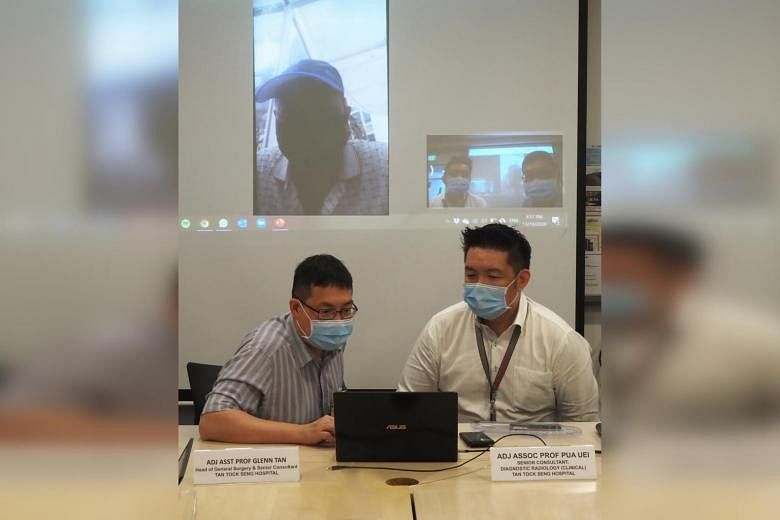SINGAPORE - When Mr Ullah Kefayet was battling Covid-19 in the intensive care unit at the National Centre for Infectious Diseases in May, his family thought they had lost him.
"My family thought I had died already," he told reporters in a brief video chat on Tuesday (Oct 13).
Hooked up to a ventilator and in a comatose state then, the 39-year-old delivery driver was in no condition to contact his wife and nine-year-old son back in Bangladesh.
Fortunately, that lasted just four days. But, it was a rare complication that he developed before he was admitted to ICU that took his doctors by surprise. He experienced acute pain in his right foot and developed early gangrene in three toes on that foot.
Doctors found that it was due to a thrombus, or blood clot, in his aorta, the main artery carrying blood from the heart to the rest of the body.
They quickly operated on him, inserting a permanent aortic stent via his groin. Three months later, his gangrene fully dissolved and he could walk properly again.
"It's very rare for a blood clot to develop in the aorta, which is a high-flow blood vessel," said Adjunct Assistant Professor Glenn Tan, head of general surgery and a senior consultant at Tan Tock Seng Hospital (TTSH).
It was all the more surprising as Mr Kefayet, who was admitted for shortness of breath and fever, had no underlying illness, Prof Tan said at a press conference on Tuesday.
Studies have shown that there is a high risk of severely ill Covid-19 patients developing sticky blood and blood clots that can lead to strokes, heart attacks and other life-threatening complications.
This is but one of the many ways Covid-19, initially viewed as a seemingly simple respiratory disease, can harm the body.
But it is not clear why some Covid-19 patients have blood clots.
Prof Tan said one likely cause is that Covid-19 causes severe inflammation in some patients. This boosts the production of cytokine (proteins produced by immune cells), which can lead to the formation of blood clots.
Another cause could be some damage to the blood vessel wall resulting in a higher risk of clot formation, he said, adding that it is not common to see Covid-19 patients here developing blood clots, possibly as most of them are relatively young and healthy.
He and other experts, including Adjunct Associate Professor Pua Uei, a senior consultant at TTSH's diagnostic radiology (clinical) department, who treated Mr Kefayet, published a paper on the treatment of arterial blood clots in Covid-19 patients in the British Journal of Surgery in August.
Prof Tan said: "A few studies showed that some people had recurrent blood clots in the legs... and my first suspicion was that there were actually clots in the aorta that were not recognised at that time. It's important to look for the source.
"It's very unusual for young people to have gangrene in their legs when they do not have any other medical problems like diabetes, so we wanted to see whether there were other causes."
So a scan of Mr Kefayet's leg was followed by a scan of his aorta. That was when doctors found the source of his problem and discovered that aortic clots were breaking off from his aorta and going into not only his right leg but also the spleen and kidneys. "If we had left the clots alone, they would probably have started travelling to his left leg and going into his intestinal blood vessels," said Prof Tan.
Without the timely surgery, Mr Kefayet could have lost his toes, and possibly his legs.












